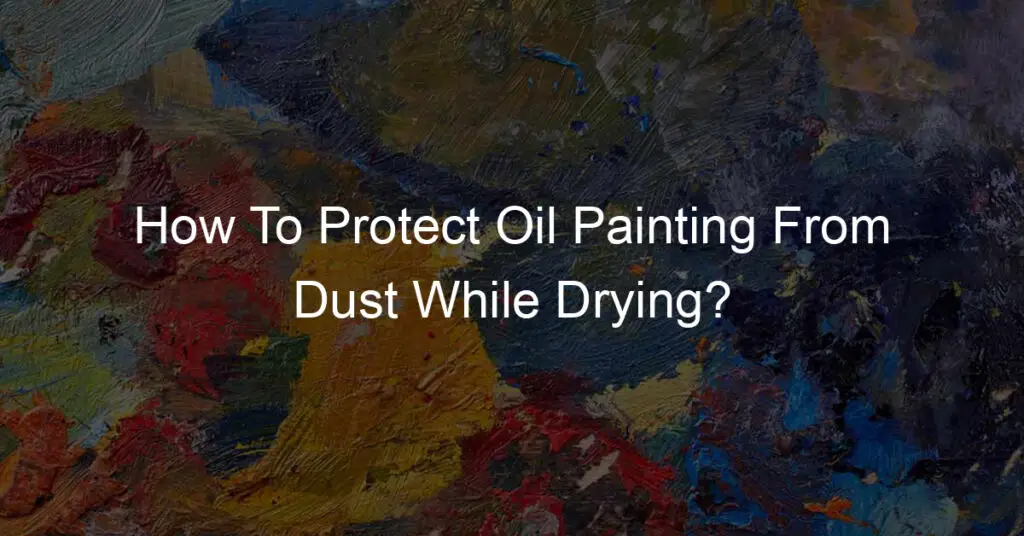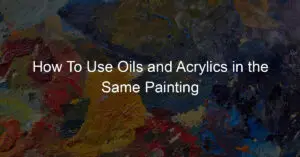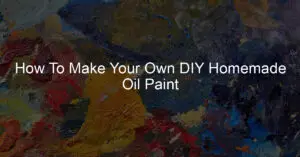Oil paintings are beautiful pieces of art that can last centuries if adequately cared for. Dust is one of the main enemies of oil paintings, as it can cause the paint to chip and flake over time. In this article, we will discuss tips on protecting your oil painting from dust while it dries.
When you finish your oil painting, and it is drying, you will want to protect it from dust. One way to do this is to place the painting on a piece of clean paper or cloth, and another way is to cover the painting with a piece of glass or plastic. If you are not able to do either of these things, you can also hang the painting up out of reach of dust and dirt. Whichever method you choose, ensure your painting is protected from dust while it dries.
How do you dustproof a painting?
You can keep oil paintings free of dust by taking simple precautions. First, when you finish your painting, allow it to dry completely before storing or displaying it. If you must store or display the artwork before it is scorched, cover it with a piece of clean paper or cloth. You can also hang the painting up out of reach of dust and dirt. Finally, if you are not able to take any of these measures, you can place the painting in a specially designed storage bag or box that will keep dust away from it.
Is there a product that repels dust?
Yes, some products repel dust. One such product is called Dust-Off. This product is designed to create a barrier between your oil painting and the dust in the air. Another product that repels dust is called Museum Wax. This wax helps to seal the pores of the canvas, keeping dust and dirt out.
What are some other ways to protect oil paintings?
In addition to protecting oil paintings from dust, you will also want to protect them from ultraviolet (UV) light. UV light can cause colors to fade over time. To protect your painting from UV light, you can either hang it in a room that does not get direct sunlight or you can place it under glass or plastic. You can also purchase special UV-resistant varnishes that will help to protect your painting from the harmful effects of UV light.
Taking these simple steps will help to ensure that your oil painting lasts for many years to come.
| Method | Description |
|---|---|
| Cover with cheesecloth or muslin | Place a layer of cheesecloth or muslin over the painting while it dries. This will protect it from dust and other particles while still allowing air to circulate. |
| Place in a box | If you have a large enough box, you can place the painting inside and close the lid to keep it protected from dust. Make sure the box is clean and doesn’t have any loose fibers that could stick to the painting. |
| Use a dust cover | A dust cover is a plastic sheet that can be placed over the painting. Make sure the plastic doesn’t touch the surface of the painting, as this can cause damage. You can tape the edges of the plastic to the back of the canvas to keep it in place. |
| Hang in a clean, dust-free area | If you have a clean, dust-free area to hang the painting, this is the easiest method. Make sure the area is well-ventilated to prevent mold or mildew from forming on the painting. |
| Use a spray fixative | You can use a spray fixative to seal the surface of the painting and protect it from dust. However, this can alter the surface texture of the painting, so it’s not recommended for all types of artwork. |
How do you gently clean an oil painting?
If your oil painting becomes dusty or dirty, you will need to clean it gently. Do not use water or any other liquids on your painting, as this can damage the paint. Instead, use a soft, dry cloth to dust the painting off. If the painting is very dirty, you can use a soft brush to lightly remove the dirt. Once you have dusted or brushed the dirt away, you can use a soft cloth to buff the painting and restore its shine.
Cleaning your oil painting regularly will help to keep it looking its best. Follow these tips and your oil painting will be sure to last for many years to come.
Why dust on a painting is a problem?
Dust on a painting is an issue that can lead to extensive and costly damage. Dust particles contain small sharp edges which, when in contact with the canvas or paint, can cause scratches, abrasions, and other irreversible damages to the surface of the painting.
Depending on the material of the paint, dust particles may also act as a catalyst in chemical reactions, causing discoloration or fading of certain parts of the painting.
The best way to reduce damage caused by dust on a painting is through regular cleaning and maintenance. Displays should be kept away from direct sunlight which causes accelerated accumulation of dust and exposure to harmful UV rays that can cause fading over time.
Any cleaning methods used should be gentle and done with extreme care so as not to scratch or otherwise damage the painting’s delicate surface.
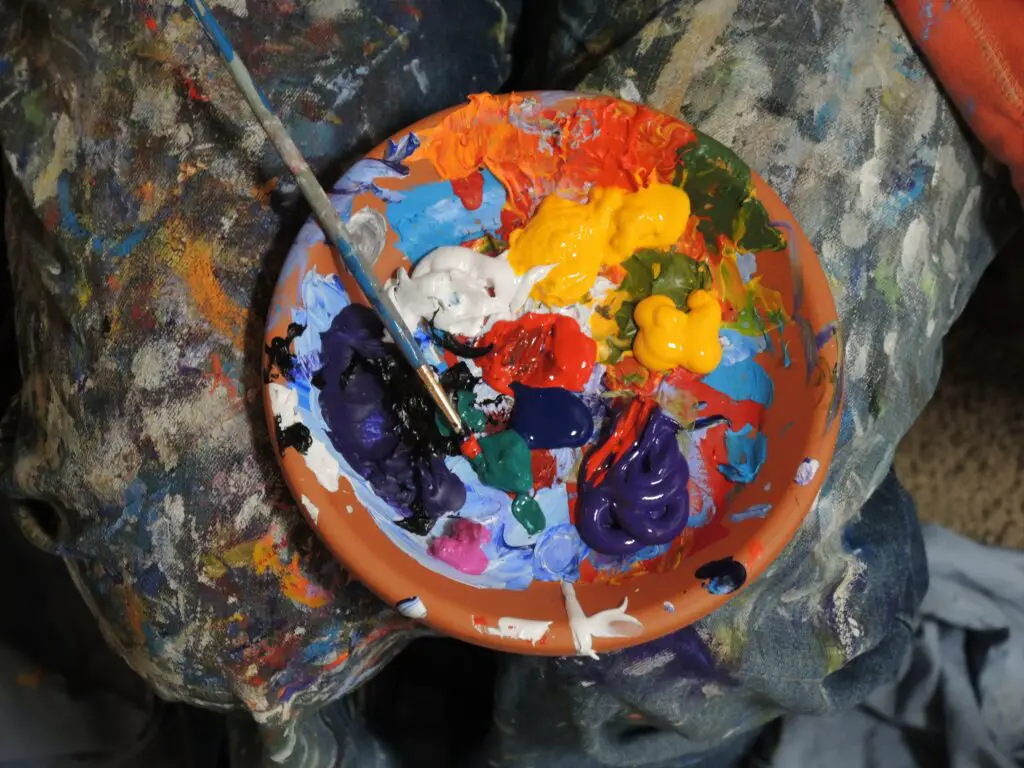
Do oil paintings get dusty?
Oil paintings are a popular choice for many art enthusiasts, thanks to their vibrant colors, intricate details, and lasting beauty.
However, because of their delicate nature, oil paintings need to be cared for and protected from dust if they are to remain in good condition. The question is: do oil paintings get dusty?
The answer is yes, unfortunately, all types of artwork can suffer from dust buildup over time. Dust particles contain small sharp edges which can cause scratches, abrasions, and other irreversible damages when in contact with a painting’s surface or paint layer.
In addition to this, the accumulation of dust on an oil painting can also lead to discoloration or fading as the dust acts as a catalyst in chemical reactions between the oils used in making the painting.
Overall, it’s important to remember that even though oil paintings can get dusty over time, regular care and maintenance will go a long way in preserving their beauty for years to come!
Is it necessary to frame the painting before storing it?
Storing a painting properly is essential for maintaining its quality and preserving it for years to come. Framing a painting can be an effective way to protect it from the elements and ensure that it stays in good condition.
However, framing is not always necessary, as there are other ways of storing a painting. When deciding whether or not to frame a painting before storing it, consider the type of artwork being stored. If the painting is an oil-on-canvas, then framing may be necessary to provide proper protection against dust and moisture.
Oil paintings require careful handling and must be kept away from sunlight and extreme temperatures. The use of glass when framing will also help to protect against ultraviolet light damage, which can break down pigments over time.
For watercolors and prints, however, framing may not be necessary if the artwork is put into a portfolio or storage box with acid-free matting material. Acid-free paper or cardboard should also be used when making frames for these types of artwork. The same goes for drawings on paper — framing is usually unnecessary if they are stored in flat drawers with acid-free paper or foam between each piece of artwork.
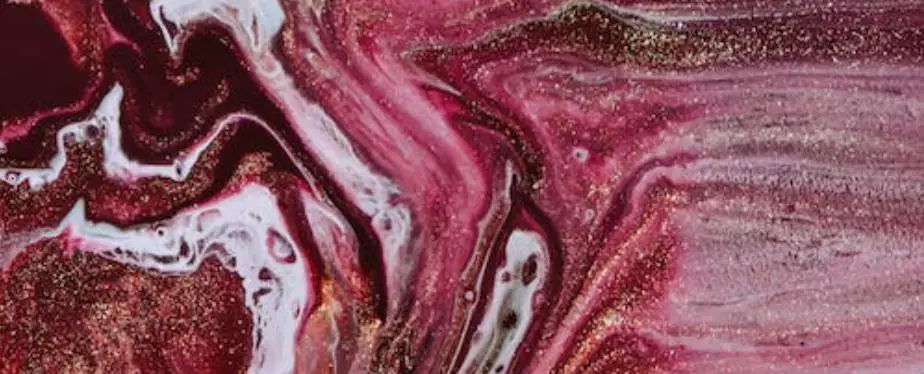
Where to place the painting to protect it from dust?
Dust is one of the leading causes of damage to a painting, and taking precautionary steps to protect it from dust is essential.
The best places to position paintings in order to protect them from dust are out of direct sunlight, away from drafts, and in an enclosed area such as a frame or case.
When choosing an enclosure for a painting, make sure that it allows enough room for ventilation and also ensures humidity levels are maintained at optimal levels (around 40%).
This will help prevent mold growth and other unwanted reactions that could damage your artwork over time. It’s also recommended that enclosures are opened regularly in order to minimize dust build-up inside; however, this should be done carefully so as not to cause any scratches or abrasions on the surface of the painting itself.
Taking into account these factors when deciding where to place your artwork will go a long way toward protecting it from dust and preserving its beauty for years to come!
Does oil keep dust away?
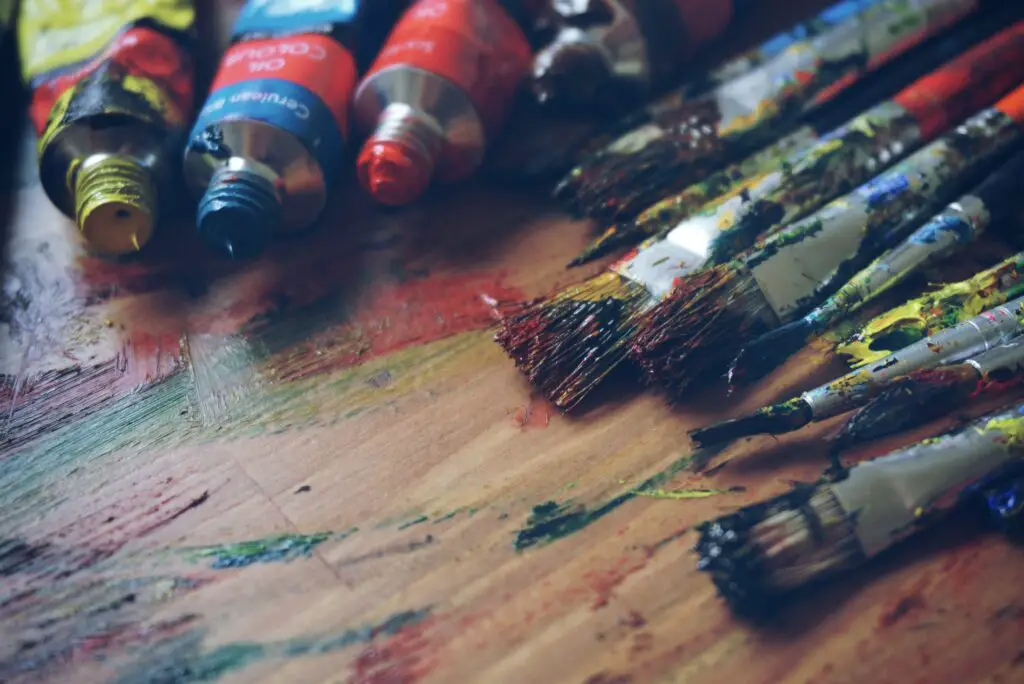
Oil is a commonly used product in many households, with its uses ranging from cooking, cleaning, and lubrication. However, one lesser-known use of oil is in dust prevention.
While it may not be the most reliable solution when it comes to keeping dust away, there are certain properties of oil that can help reduce the amount of dust present in a room or home.
First and foremost, oil can act as an effective barrier for dust particles. Its thick viscosity allows it to create an even coat over surfaces which helps prevent dirt from settling and sticking to them.
Additionally, this same property also aids in trapping any existing airborne dust inside the layer of oil, preventing it from further spreading across the room or making its way into other areas of your home.
In conclusion, while using oil may not completely rid homes of all the unwanted dirt and debris brought in by guests or pets, its properties certainly make it one of the better options when it comes to reducing how much we have to clean up after them!
With regular care and maintenance, we can ensure our homes remain free from excessive amounts of dust for years to come!
Conclusion
Protecting an oil painting from dust while drying is essential for preserving its beauty and longevity. By keeping the painting away from direct sunlight, and drafts, and in a well-ventilated enclosure such as a frame or case, you can minimize damage caused by dust particles that may scratch or abrade the delicate surface of your artwork.
Additionally, using certain types of oils to create a barrier against dirt and other unwanted pests can also help keep dust at bay without causing any harm to your paintings.
Regular cleaning with HEPA filters will ensure all accumulated debris is removed before they become too difficult to eliminate with just oil alone.
Taking these precautions when caring for your artwork should enable them to retain their vibrant colors and intricate details for years to come!

